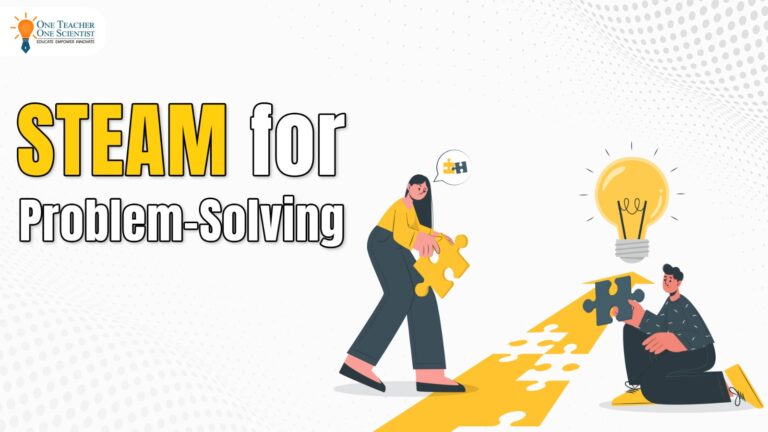In this fast changing world, the educational landscape needs to evolve at an equally fast pace to match the dynamic requirements of the 21st Century. In such a scenario where children are being prepared for an unknown tomorrow, self-directed learning is seen at the forefront of this transformation. At One Teacher One Scientist we firmly believe in giving personalised learning opportunities where the learner is at the centre of each learning process. Self-Directed learning is at the heart of all our offerings our resources, services and extended support. We aim to help teachers and parents nurture lifelong learners who are self-motivated and use learning as an important journey for personal growth. We respect that actual growth is personal and the role that education can play is towards self-realisation and personal empowerment. That is where self-directed learning becomes an important tool.
Self-Directed Learning in a nutshell
In Self-directed learning students are encouraged to set their own goals, engage with learning material at their own pace, and reflect critically on their progress. In many cases, students are also given freedom to design their own learning strategy and devise their own implementation plan. The teachers transfer the control of learning into the hands of the learner, promoting a sense of ownership and accountability. At OTOS, we help teachers to integrate self-directed learning seamlessly in their classrooms. We view it as a critical pedagogical process to develop independent thought and robust critical thinking skills.
Key Stages of Self-Directed Learning
If we closely look at the process, self-directed learning can be broken down into four strategic stages:
- The Planning Stage: Here, the learners identify their learning objectives and devise the plan for achieving the planned outcome
- Implementation Stage: After devising the plan, students engage with the resources identified in the planning stage and use different methods and techniques to reach the learning outcome.
- The Monitoring Stage: Students are given charge to assess their personal understanding and monitor their progress. It is personalised monitoring where children get a clear understanding of what has been achieved during the implementation stage
- Evaluation Stage: Learners reflect on how much has been achieved in their learning objectives and identify their areas for improvement.
We at OTOS have designed courses and workshops for teachers to help students get powerful and personalised learning opportunities in classrooms. Our resource section has extensive lesson plans and projects that are easy to use and implement in the classrooms. This section provides a blueprint for teachers to guide their students through various stages of learning with supportive resources and mentorship in classrooms. This shift would eventually lead to powerful learning and skill building.
Roles and Responsibilities in the Four-Step Process
While self-directed learning places the learner at the center, it’s a collaborative effort. Teachers act as facilitators, offering guidance and feedback, and also helping students stay directed towards their learning goal. Institutions like OTOS contribute by empowering teachers both professionally as well as consciously to create environments that are conducive to integrating self-directed learning process. Through classroom resources we also play a crucial role in providing the framework and tools for this transformative educational journey.
SLATE into Self-Directed Learning
Our SLATE ( Simple Learning Activities to Think and Empower) is a unique bridge programme where we have created lesson plans and learning modules to integrate self-directed learning in a very simple yet impactful manner. Children from the community find support in this programme and in a structured manner take charge of their learning process, feeling empowered in the journey. Comprehensive learning materials and Teacher resource book helps teachers and volunteers align their daily interventions with self-directed learning by encouraging students to explore, question, and discover, in groups without feeling isolated in their educational journey. Circle time and active learning opportunities give children freedom to explore creative pursuits making their learning journey very engaging and collaborative.
Conclusion
Self-directed learning is more than an educational concept; it’s a powerful pathway to cultivate lifelong learning in children. It helps us create a classroom culture that leads to raising curious, motivated, and resilient children. Self Directed learning is also high on metacognition and responsible learning. The value that OTOS provides is by cultivating this spirit of deeper learning by not overtaking the educational narrative but by enriching it with the tools and support systems that make self-directed learning a reality for students and teachers alike. We enable teachers to create such classrooms and cultivate cultures where practices like these can thrive to create a generation of thinkers, who are future ready. We prepare learners who can face the complexities of the future with confidence and agility. And at OTOS we firmly believe this to be the primary crux of every educational journey: To prepare children for LIFE.




